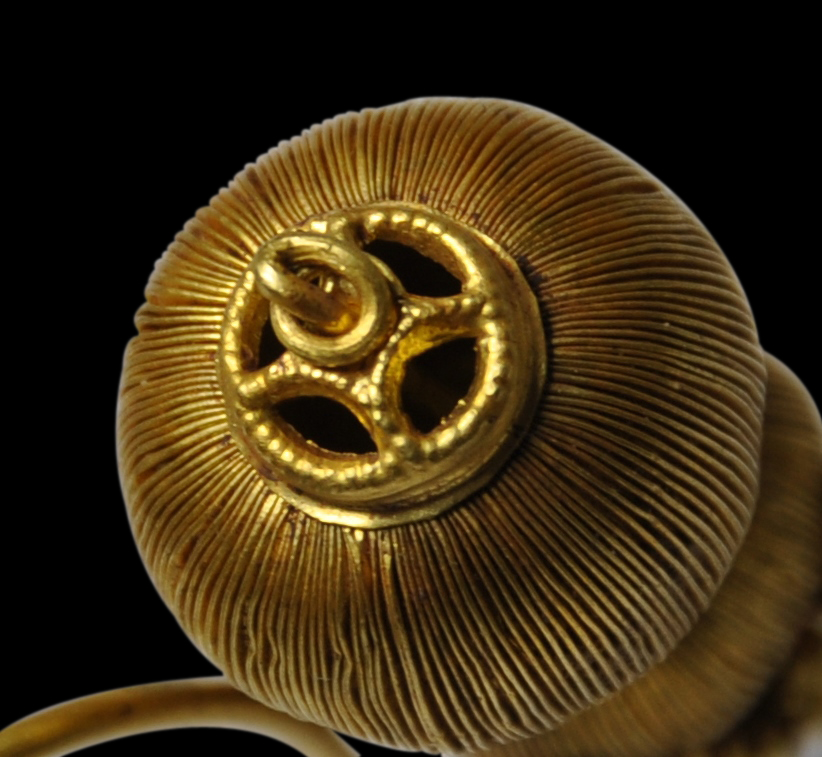Each of these masterfully-crafted earring is with beaten gold folded into very fine pleats into double-gourd shapes with a small, pearled gold wire ring cinching the waist. The base of each gourd has an open-work ‘cash’ motif. The tops of the gourds are decorated by four gold leaves, engraved and with the edges shaped into tiny repeated curls. The leaves secure a long ankyroid or ‘S’-shaped wire for threading through the earlobe. Possibly, such earrings were commissioned for members of the Imperial family as weddings gifts with the wish for many sons.
The double gourd form was much appreciated in China from at least the Tang period (618-906). They were associated with abundance and fertility, largely on account of their luxuriant tendrils and many seeds. Another interpretation is that the double element structure represents the double nature of the universe with the lower sphere representing the earth and the upper sphere representing the heavens (Rawski & Rawson, 2005, p. 467)
Click here for a related pair sold at Sotheby’s Hong Kong in the ‘Masterpieces of Chinese Precious Metalwork’ sale of April 11, 2008, lot 2324. Importantly, the examples here are in better condition than those offered from the Carl Kempe Collection at Sotheby’s.
A pair of related earrings in double-gourd form but lacking the refinement of the examples here is illustrated in Han & Deydier (2001, p. 137).
The examples here are without losses, tears of repairs. One of the earrings has some denting, but among the examples of this type we have seen published or otherwise, the condition of this pair is unusually good.
References
Gyllensvard, B., Chinese Gold and Silver in the Carl Kempe Collection, Stockholm, 1953.
Rawski, E.S. & J. Rawson (ed.), China: The Three Emperors 1662-1795, Royal Academy of Arts, 2005.





